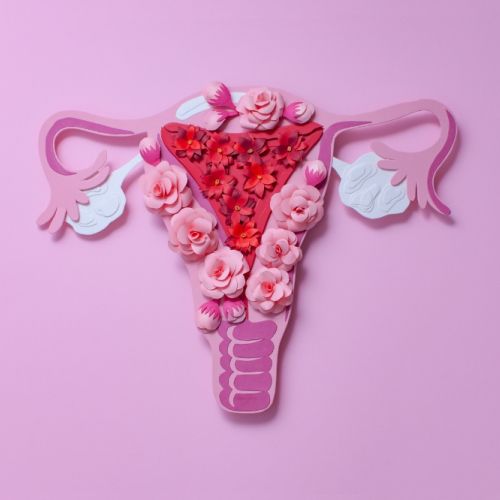What Can I Learn From a Semen Analysis?

The quality and quantity of a man’s semen and the sperm within it has a major effect on whether or not a couple can conceive. At the California Center for Reproductive Health, one of the first steps in your fertility workup is a semen analysis of the male partner.
Information gleaned from a semen analysis
This test is ordered because it provides our experts with a lot of important information. Here’s just some of what they (and you) can learn from a semen analysis:
- Ejaculate volume: to determine if a man produces enough semen during ejaculation
- Sperm concentration: to determine if there is a high concentration of sperm in the semen
- Sperm vitality: to determine the percentage of live sperm in a sample
- Motility: to evaluate the ability of sperm to swim toward an egg
- Morphology: to analyze the size and shape of sperm
- pH: to determine if semen is too acidic and negatively affects fertility
Ideally, you have active sperm that each have a single round head and tail.
Semen analysis also looks at how quickly semen changes from a sticky substance to a liquid. You want your semen to turn to liquid quickly so it travels readily through the female’s reproductive tract.
If there are an abnormally high number of white blood cells in the semen sample, it could indicate an infection or inflammation that affect the ability to conceive.
Other more rare and complex issues that arise with the sperm and can be detected through advanced analysis include the presence of antisperm antibodies, abnormal sperm DNA issues, and a central hormone balance.
The process of providing a sample
A man usually masterbates to produce a sample. You’ll go to a private, comfortable room and ejaculate into a sterile container. This is the cleanest way for us to obtain a sample. You may be asked to provide more than one sample spaced out days or weeks apart because sperm counts can change from day to day.
Refrain from sexual activity for 2-7 days prior to your scheduled test. This helps ensure your sperm counts are at their highest level and that we get a good picture of semen quality.
Evaluating the results of your semen analysis
If you have abnormal results, it means you have a below-average chance of conceiving with your partner. Following semen analysis, our doctors may do additional tests to look for blockages that prevent the body from releasing sperm into the semen.
They’ll also look for infection or low testosterone levels. Your semen analysis results may also be affected by certain medications or medical conditions.
Your sperm quality may also be impacted by your use of tobacco, alcohol, illicit drugs, or some herbal medications or supplements. If these factors are affecting your sperm count, you probably don’t have a problem with your fertility. We can help you make necessary lifestyle changes to promote sperm health.
Being unable to conceive is frustrating and disheartening. The team at the California Center for Reproductive Health know this, and we do everything possible to help you understand why you’re having trouble growing your family so they can offer state-of-the-art solutions.
Call one of our offices in Encino, Valencia, Alhambra, or West Hollywood, California, to set up an appointment. Alternatively, reach out via this website.
Eliran Mor, MD
Reproductive Endocrinologist located in Encino, Valencia & West Hollywood, CA
FAQ
What does a reproductive endocrinologist and infertility specialist do?
Reproductive endocrinology and Infertility is a sub-specialty of Obstetrics and Gynecology. In addition to managing medical and surgical treatment of disorders of the female reproductive tract, reproductive endocrinologist and infertility (REI) specialists undergo additional years of training to provide fertility treatments using assisted reproductive technology (ART) such as in vitro fertilization.
Reproductive endocrinologists receive board certification by the American Board of Obstetrics and Gynecology in both Obstetrics and Gynecology and Reproductive Endocrinology and Infertility.
When should I see an REI specialist?
In general, patients should consider consulting with an REI specialist after one year of trying unsuccessfully to achieve pregnancy. The chance of conceiving every month is around 20%, therefore after a full year of trying approximately 15% of couples will still not have achieved a pregnancy.
However, if a woman is over the age of 35 it would be reasonable to see a fertility specialist earlier, typically after 6 months of trying.
Other candidates to seek earlier treatment are women who have irregular menses, endometriosis, fibroids, polycystic ovary syndrome (PCOS), women who have had 2 or more miscarriages, or problems with the fallopian tubes (prior ectopic pregnancy).
What are the reasons we are having trouble conceiving?
Approximately 1/3 of the time cause for infertility is a female factor, 1/3 of the time a male factor, and the remaining 1/3 a couples’ factor.
At CCRH, we emphasize the importance of establishing a correct diagnosis. Both partners undergo a comprehensive evaluation including a medical history and physical exam.
Furthremore, the woman’s ovarian reserve is assessed with a pelvic ultrasound and a hormonal profile. A hysterosalpingogram (HSG) will confirm fallopian tube patency and the uterine cavity is free of intracavitary lesions. A semen analysis is also obtained to evaluate for concentration, motility, and morphology of the sperm.
Additional work up is then individualized to direct the best possible treatment option for each couple.
What is IVF? What is the process like?
In vitro fertilization (IVF) is the process that involves fertilization of an egg outside of a woman’s body.
The process starts with fertility drugs prescribed to help stimulate egg development. In your natural cycle, your body is only able to grow one dominant egg, but with stimulation medication we can recruit multiple eggs to continue to grow. After about 8-10 days of stimulation, the eggs are surgically retrieved and then fertilized with sperm in a specialized laboratory. Fertilized eggs are then cultured under a strictly controlled environment within specialized incubators in the IVF laboratory for 3-5 days while they develop as embryos. Finally, embryos (or an embryo) are transferred into the uterine cavity for implantation.
Should I have IVF?
Before deciding if IVF is the right choice, it’s important to sit down with an REI specialist to discuss available treatment options. For some people, other methods such as fertility drugs, intrauterine insemination (IUI) may be the best first choice treatment. At CCRH, we believe each individual couple is unique and not everyone needs IVF.
Is the IVF procedure painful?
While not painful, the fertility medications may some side effects including headaches, hot flashes, mood swings, and bloating. The injection sites may also bruise.
Will IVF guarantee a baby?
Unfortunately, no. Many people think once they start IVF it’s a matter of time that they will be pregnant and have a baby. But according to national statistics per the Society of Assisted Reproduction (SART), on average 40% of assisted reproduction cycles achieve live births in women under age 35. The chances of success then continue to decrease with advancing age.
At CCRH, we employ only evidence-based interventions to ensure patient safety and optimal outcome. While we cannot guarantee a baby, we guarantee that you will receive the best, most advanced, personalized care to help you maximize your chance of a baby.
What is the success rate for IVF?
The average IVF success rate (success measured in live birth rate) using one’s own eggs begins to drop around age 35 and then rapidly after age 40. This is due to the decline in egg quantity and egg quality as a woman ages.
Our clinic’s success rate consistently beats the national average year after year.
Do insurance plans cover infertility treatment? How much does IVF cost?
Individual insurance plans often do not have any coverage for infertility treatments. If you have a group plan, you can call members services to see if they have coverage for infertility (including consultation/workup and IVF).
After your consultation with our REI specialist, one of our dedicated account managers with sit with you to go over the cost of treatment.




